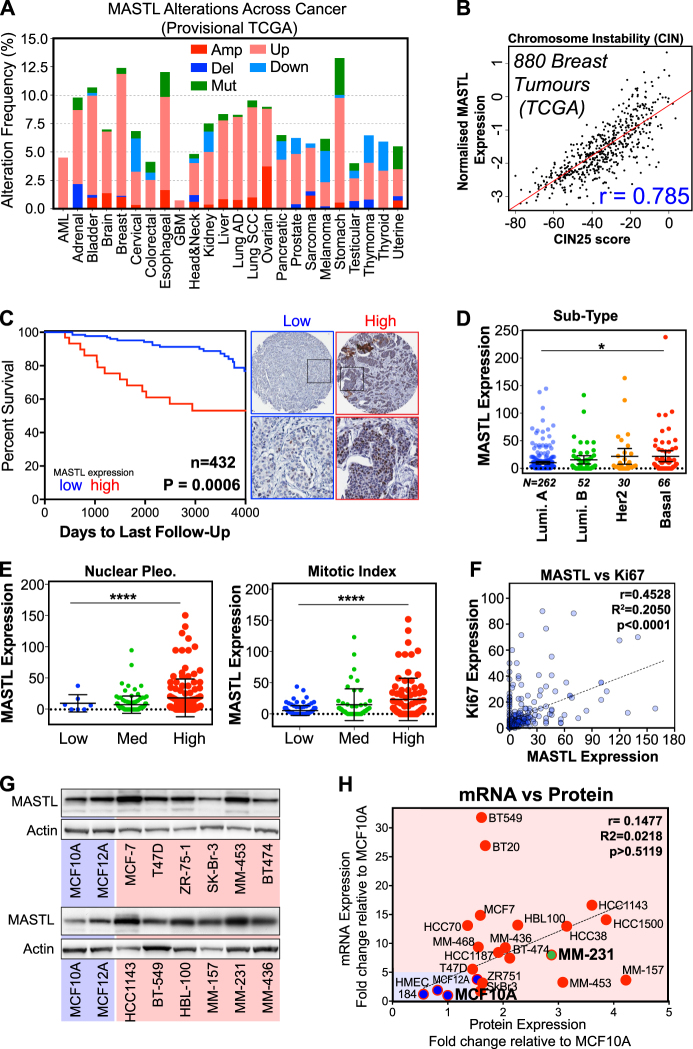Fig. 1.
High MASTL expression correlates with poor overall survival in breast cancer. a The percentage of genomic alterations of MASTL across the spectrum of human cancers currently annotated in the TCGA provisional databases (cBioportal). b Correlation (Pearson) between the expression of CIN25 gene signature and MASTL in 880 breast tumour cases in the TCGA. c Breast cancer tumours from a cohort of 473 patients were stained and scored for MASTL protein expression and overall survival, Kaplan–Meier curves for high and low MASTL expression generated. Representative micrographs of low and high MASTL shown. d, e MASTL expression compared with other clinicopathological features; MASTL expression is significantly higher with mitotic index, histological grade and the Basal breast cancer subtype (one-way ANOVA, mean ± S.D, n = 473, ****p < 0.0001, *p < 0.05). f Correlation between MASTL expression and Ki67 staining intensity in TMA cohort (Pearson’s r correlation, 0.4522, n = 432). g Western blot analysis of MASTL protein expression in a range of non-tumorigenic (blue) and tumorigenic breast cancer cell lines (red). h Comparison of MASTL protein mRNA expression (TaqMan RT-PCR) from normal and breast cancer cell lines. All values normalised to MCF10A protein and mRNA levels

